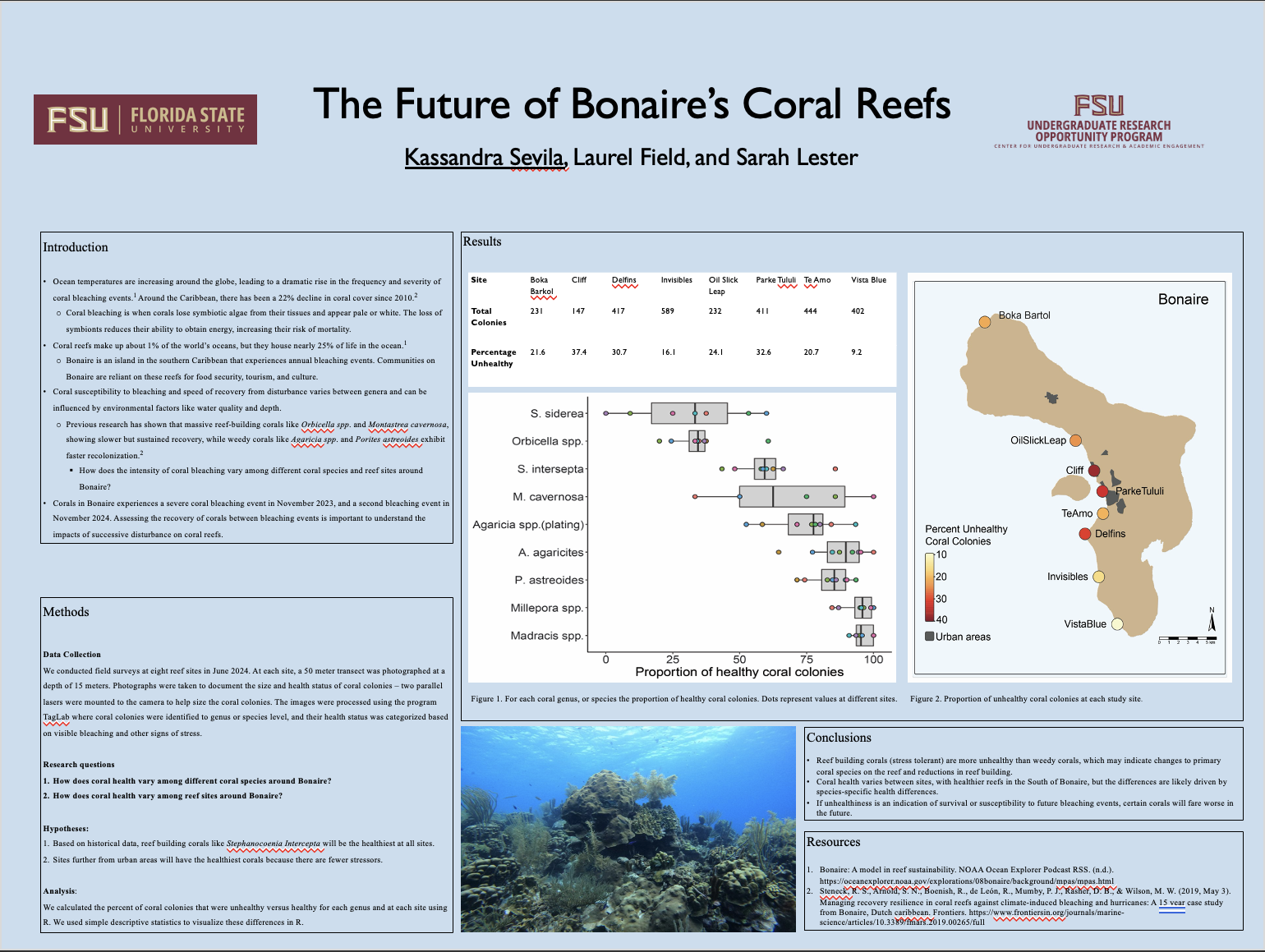Research Symposium
25th annual Undergraduate Research Symposium, April 1, 2025
Kassandra Sevila Poster Session 3: 1:45 pm - 2:45 pm/ Poster #158

BIO
I am a first-year student at Florida State University with an immense passion for the environment and its conservation. I’m from the vibrant city of Miami, Florida, where I’m surrounded by the beautiful ocean and just an hour away from the gorgeous Keys and the Everglades. Growing up in such an ecologically rich area has inspired my passion for studying ecology and the ocean, as well as advocating for them. I’m interested in conducting research that focuses on the environment, marine ecosystems, and the environmental factors that impact them. My goal is to contribute to the understanding of these delicate systems and research solutions that promote sustainability and conservation. I plan to pursue graduate school to further my research in the field of environmental science. I’m excited about the opportunity to make a meaningful impact through my work in ecology.
The Future of Bonaire's Coral Reefs
Authors: Kassandra Sevila, Laurel FieldStudent Major: Environmental Science and Psychology
Mentor: Laurel Field
Mentor's Department: Biological Sciences Mentor's College: Arts and Sciences Co-Presenters:
Abstract
Climate change induced coral bleaching threatens coral reefs worldwide, causing mortality, altered species assemblages, and reduced ecosystem services. However, susceptibility to and recovery from coral bleaching varies between coral species and locations. Understanding these dynamics is critical as coral reefs make up only about 1% of the world’s oceans, but house nearly 25% of species found in our oceans. Bonaire, a southern Caribbean island, is dependent on healthy reefs for tourism, food security, and cultural identity. Reef health is impacted by recreation, water quality, coastal development, and temperature stress. We compared the health of coral genera at six different sites in Bonaire in June 2024 - six months after an island-wide coral bleaching event in late 2023. At each site, one 50m transect (15m depth) was photographed to capture the size and health status of coral colonies. We used the program TagLab to analyze 50-60 photos per site, identifying coral colonies to genus or species and assessing their health status. We used the ‘R’ data analysis program to compare coral taxa health and site-level differences. I expect Stephanocoenia Intercepta to be least affected by coral bleaching due to its low bleaching susceptibility and high stress resistance compared to Orbicella spp., Millepora spp., Porites astreoides, Montastrea cavernosa, and Agaricia spp.. A limitation of this study is potential misidentification of coral bleaching versus disease. Our findings will improve the understanding of how coral taxa in the Caribbean respond to coral bleaching events and whether reef resilience varies at small geographic scales.
Keywords: coral reef, Bonaire, climate change, corals, Carribean


